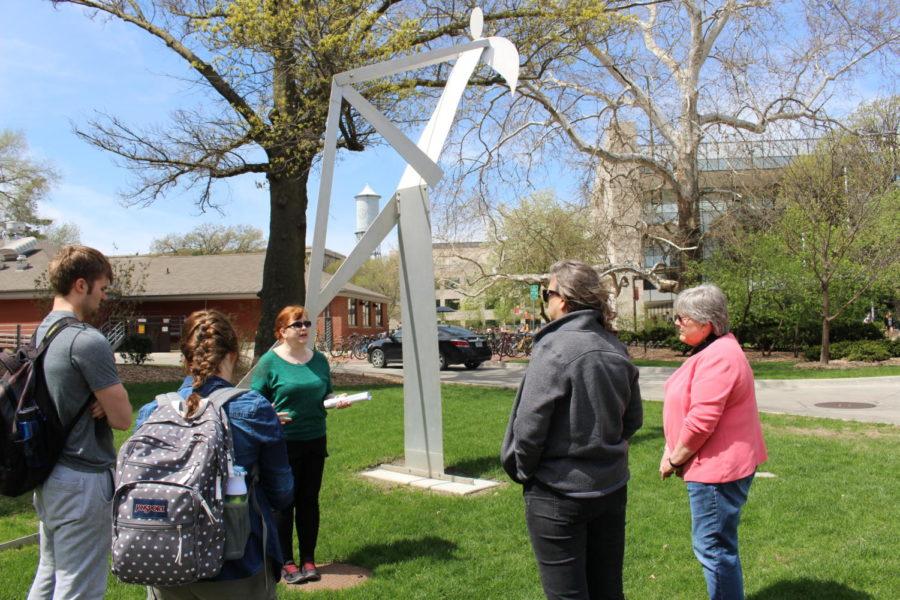UM Connection celebrates International Sculpture Day
April 25, 2017
University Museums celebrated International Sculpture Day on Monday with a UM Connection, offering a tour of their collection of sculptures. Three sculptors were featured on the campus tour led by Erin O’Malley, campus outreach coordinator for University Museums.
The tour began in the Andersen Sculpture Garden around a sculpture created by William “Bill” King. King is a self-taught sculptor from Miami who discovered his love of sculpting at the age of 4.
“From an early age he liked manipulating materials,” O’Malley said.
In “Cupid,” which was installed last fall outside of Morrill Hall, King highlights the idea of love. O’Malley pointed out how exposed King’s process was, and how King made no efforts to hide the bolts holding his sculpture together.
“It’s a human figure in one respect, but he shows that they’re bolted and artificial,” O’Malley said. King also uses aluminum, a lighter material, which makes the sculpture easy to move around campus.
“Forward,” which is located across the road from Morrill Hall, is a favorite work of students. At one angle, it appears to be comprised of two figures, while from another angle the viewer can see all twelve figures. O’Malley said that the sculpture represents the college experience, where students go through college with others but also go through an individual process of discovery.
King’s work often features humans in humorous ways. He sought to make his work accessible to the public, and tries to get to the core of humanity by using abstract shapes and figures.
“It’s about expressing emotions, and the little moments of being human,” O’Malley said.
King also attempted to inspire others to create their own work, and pokes fun at people who take art too seriously for his tastes.
“A lot of his art points to the absurdity of the pedestal we put fine art on,” O’Malley said.
Another featured sculptor was Beverly Pepper, whose sculpture “Janus Agri Altar” is located outside of Agronomy Hall. Pepper’s sculpture was one of the first installed as part of the Art in State Buildings Act.
Pepper was studying in Rome when an Italian sculptor asked if she could contribute a piece of work to an exhibit. There was only one requirement: could she weld?
“She lied and said yes so she could be in the exhibit,” O’Malley said. Pepper learned to weld from a local street artists and eventually discovered her love for working with metal.
The piece represents a spade, a tool that has endured the years within the field of agriculture. The symmetrical nature of the piece imitates Janus, the Roman god of beginnings and endings.
“Agronomy is continuous, and you could see it as the basis for civilization,” O’Malley said.
The space surrounding the work was intended to imitate a sacred grove, but a 2005 tornado destroyed many of the surrounding trees. “Janus Agri Altar” was one of the first modern art pieces on campus along with “Left Sided Angel” by the library. The latter piece generated some controversy when it first came on campus.
“Many of the campus community didn’t know what to do with it or didn’t like it,” O’Malley said.
The final stop on the tour was in the Gerdin Business Building, where Manuel Neri’s “Escalieta I” resides.
Neri recently donated over $1.2 million worth of artwork to University Museums, and the donation includes an additional 13 sculptures and 15 drawings. His work will be featured in the Petersen Art Museum in the spring of 2018.
Neri is inspired by classical Roman art and he often sculpts female figures and leaves them unfinished.
“They’re always sort of emerging out of the piece, and that emphasizes how we as humans are unfinished,” O’Malley said.







